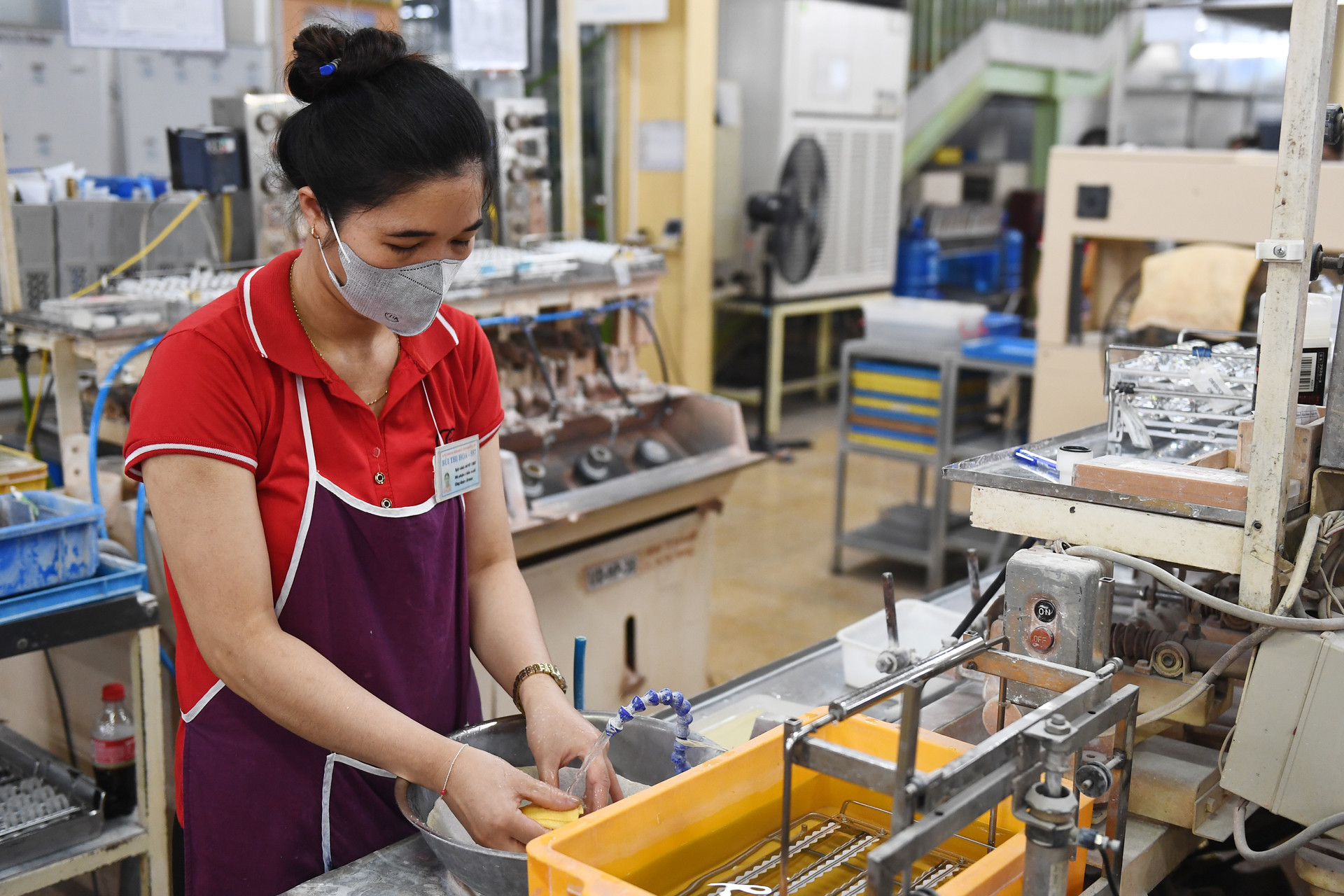
In the two years of pandemic, 2020-2021, investment increased by 1.85 percent per annum. Of this, private investment grew by 2.9 percent, state investment 7.4 percent, and FDI (foreign direct investment) 2.85 percent.
Economists estimated that every 0.7 percentage point increase in investment created one percentage point in GDP growth rate.
In 2022, investment increased by 11.2 percent. Of this, private investment grew 8.9 percent, state investment 18.1 percent and FDI 13.5 percent. Every 1.4 percentage point increase in investment could create one percentage point of GDP growth rate.
In 2023, investment increased by 6.2 percent. Of this, private investment increased by 2.7 percent, state investment 21.2 percent and FDI 5.4 percent. Every 1.2 percentage point increase in society’s investment could create one percentage point of GDP growth rate.
In the first six months of the year, investment increased by 6.8 percent. Of this, private investment increased by 6.7 percent, state investment 3.5 percent and FDI 10.3 percent. Every 1.1 percentage point increase in investment could create one percentage point of GDP growth rate.
As such, in recent years, state investment and FDI were the major resources for growth. The ratios of investment growth to GDP growth show a sharp increase in investment efficiency compared with 2012-2019.
Regarding private investment, previously, for every 2-3 businesses joining the market, there was one business leaving. But the ratio dropped to 1.3 in 2023 and to 1.1 in the first six months of the year.
Outstanding loans grew slowly. In 2023, actual credit grew by 8 percent only compared with December 31, 2022. As of the end of June 2024, credit had grown 4.5 percent compared with December 31, 2023, a very low figure compared with the 14 percent growth rate per annum in previous years.
The noteworthy point is that Vietnam had a high credit growth rate of 14 percent when the State Bank of Vietnam (SBV) set credit growth rate ceiling and applied other measures to tighten credit.
The credit growth rate was low recently, despite loosened monetary policy and directions requesting to boost credit and help remove difficulties for enterprises.
So, investment grew slowly, the ratio of businesses entering the market to businesses leaving the market was 1:1, and credit grew more slowly than usual. Meanwhile, GDP in the second quarter 2024 seemed to be the highest by quarter for many years, including pre-pandemic years.
Hot growth and inflation
A report of the Central Institute of Economic Management (CIEM) showed that the real growth rate exceeded the potential growth rate in the last four consecutive quarters, since the third quarter in 2023. So, Vietnam is witnessing ‘hot’ growth.
Nevertheless, the core inflation during the same period was stable, at 2.7 percent and domestic demand tends to decrease.
There are some remarkable factors comparing the indicators related to the growth in the second quarter 2019 and second quarter 2024.
Of 19 relevant indicators, the former had 14 indicators better than the latter and four worse (world economy; agriculture growth; FDI and export), but the GDP of the second quarter of 2024 was higher than that in second quarter of 2019.
The differences were substantial in the service sector. While the revenue growth rate (excluding price fluctuations) in the second quarter of 2019 was 1.91 times higher than the second quarter of 2024 (8.45 vs 4.41), but the value added (VA) of the service sector in the second quarter of 2019 was just equal to 0.97 compared with the second quarter of 2024 (6.85 vs 7.03).
If considering final expenditures (calculating GDP based on consumption), people’s expenditures and assets in the second quarter of 2019 were very high (7.01 percent and 7.53 percent, respectively). The figures in the second quarter of 2024 were much lower (5.75 percent and 6.72 percent, respectively), but GDP was higher (6.93 vs 6.71).
Meanwhile, recent factors were less favorable than previously: the business confidence of the FDI sector and private sector was low; the real estate market has not recovered yet; and the business environment has not improved considerably.
In a word, while the second quarter 2019 had more favorable conditions than the second quarter of 2024, the GDP growth rate was lower. This is unusual and needs to be clarified.
Nguyen Dinh Cung